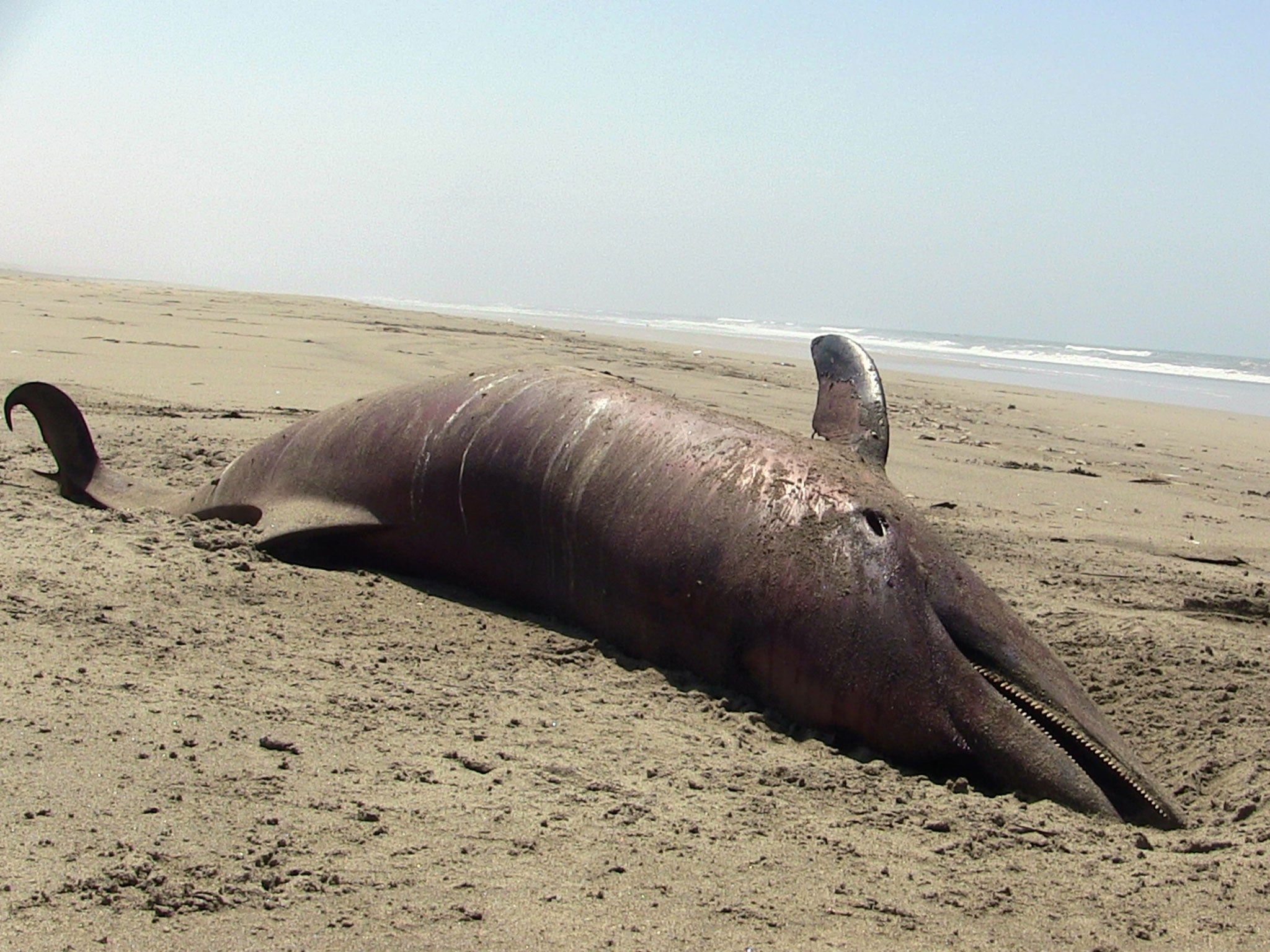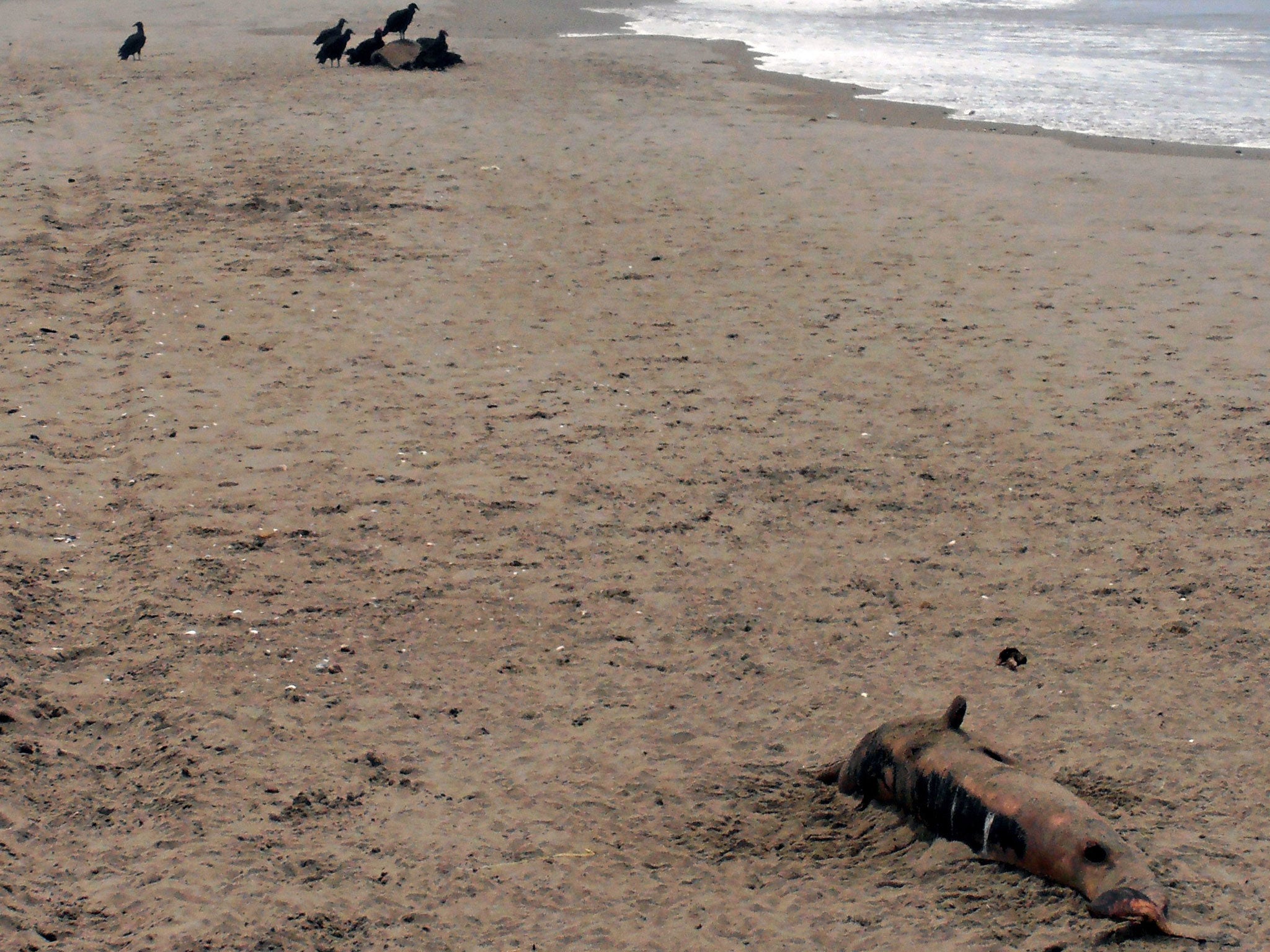Over 400 dead dolphins wash up on northern Peru beaches
Samples of the animals remains have been sent off for autopsies

Over 400 dolphins have washed up dead on beaches in northern Peru, leaving scientists and marine biologists baffled over the cause of their death.
More than double that number of dead were encountered in 2012, officials said Monday.
The dolphin carcases were discovered in the Piura and Lambayeque regions on the northern coast in January, close to the Ecuadorian border.
Authorities failed to establish the cause of the 870 deaths in 2012 after autopsy results proves inconclusive. They are now performing autopsies on the latest dolphins found during January, the results of which are expected within the next two weeks.
Yuri Hooker, director of the marine biology unit at Cayetano Heredia University, told The Associated Press that in other parts of the world dolphin deaths are generally caused by environmental contamination when the sea mammals eat fish or other smaller species filled with toxins. Others can die after ingesting discarded plastic floating in the sea, he added.

Determining the cause of their death is “complicated” in Peru, the marine biologist said, because government laboratories have only three or four of the world's 100 or so chemical reagents that can be used for determining the animals' cause of death.
Additional reporting by Associated Press
Join our commenting forum
Join thought-provoking conversations, follow other Independent readers and see their replies
Comments
Bookmark popover
Removed from bookmarks